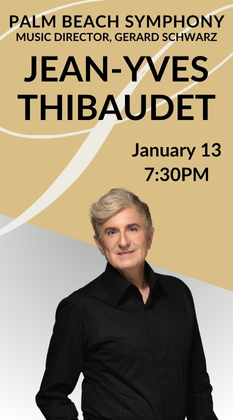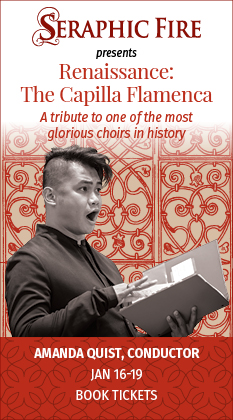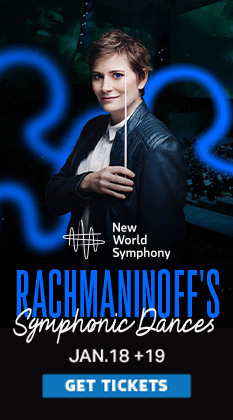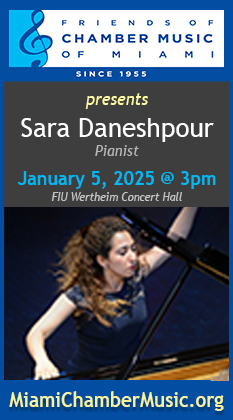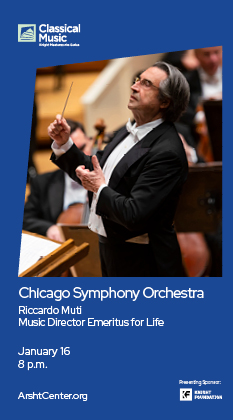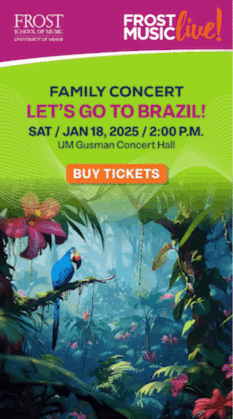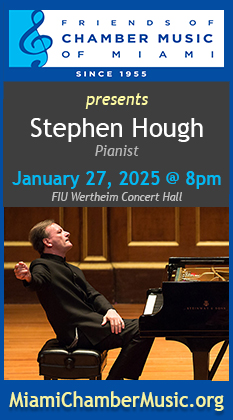Labadie, New World serve up Gabrieli and Vivaldi in the round
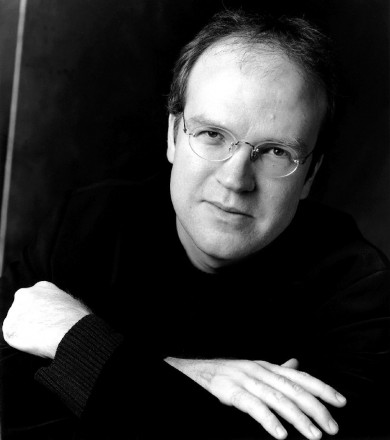
Bernard Labadie conducted the New World Symphony in music of Gabrieli and Vivaldi Sunday afternoon at New World Center.
Conductor Bernard Labadie and countertenor Damien Guillon headlined the New World Symphony’s Sunday matinee concert of Venetian Renaissance and Baroque antiphonal music, but the New World Center itself played the starring role.
Antiphonal music separates ensembles to create call-and-response effects. Inspired by the first time he conducted at the venue, Labadie called Sunday’s concert “by far the craziest project I’ve ever done, only possible in this structure with these musicians.”
Antonio Vivaldi and Giovanni Gabrieli’s antiphonal music is usually performed in large, resonant cathedrals. Influenced by the use of the Basilica’s opposing choir lofts for call and response, Gabrieli introduced dynamic detail, specific instrumentation, multiple ensembles, and overlapping lines.
Frank Gehry’s NWC design, with raised platforms, performance nooks and crannies, and choral balconies surrounding the stage, offered Labadie plentiful sites for his ensembles. Golden images of Basilica San Marco, where Gabrieli was principal composer, transformed the upper walls into “Venice, Florida.”
Brass Canzons from Gabrieli’s Sacrae symphoniae opened each half. From platforms stage right and left, NWS’s exceptional brass showed clear separation in the brightly canonic lines of Canzon septimi toni II à 8, deepened by the hall’s moderate reverberation. Coordination is always challenging with ensembles in different locations, but Labadie’s cueing was crisp, clear, and assured.
The second half’s Canzon noni toni à 8 was more somber, requiring imitation within as well as between quartets. The musicians captured the emotive content, but the parallel faster passages exposed some intonation issues.
In Vivaldi Violin Concerto in A major, “per echo in lontano” (to echo in the distance), soloist Audrey Wright’s scintillating, non-vibrato sound captured the elegant airiness of baroque violin, with three echoing violin soloists out of sight above the audience. In a standout performance, principal echo soloist Kayla Moffett’s precise duplication of Wright’s solos was uncanny. Unfortunately, Wright’s low-cut dress threatened imminent wardrobe malfunction, distracting from her exquisitely rendered final Allegro.
The larger ensembles were equal stars, providing perfectly balanced support of the soloists, assisted by guest concertmaster Nicole Trotier and guest organist Richard Paré.
On the second half, Foster Wang’s performance of Vivaldi’s Violin Concerto in C “Per la Santissima Assunzione di Maria Vergine” had less finesse but more fire, alternating flashy solos with orchestras center stage and above to the right. Wang struggled with double stops in the final Allegro, but brilliant arpeggiandi, polyphonic effects, and a passionate cadenza made this the clear audience favorite.
Countertenor Damien Guillon, flutist Emma Gerstein, and Zachary Good and Maryanna Bryant on recorders joined the two orchestras for Vivaldi’s Salve Regina. After a rough start, Guillon warmed into a mellow, rounded tone. Except for trailing off in his low register, Guillon’s impressive uniformity brought expressive drama to the text.
Vivaldi’s Salve Regina in G minor on the second half was more secure, opening into a bright high register with agility on treacherously fast arpeggios. The two orchestras supplied a transparent texture, with bright sparks of oboe duets, allowing Guillon to shine.
In contrast, the Serenade No. 8 in D for four orchestras by Wolfgang Amadeus delivered classical simplicity with innovative antiphony. Mozart’s phrases radiated outward from center stage to three additional orchestras: behind, above to the side, and overhead from the rear. His modified canon unfolded formulaically, progressively shortening the phrase until it was only one measure long in the last orchestra, whisper quiet. The final Menuetto showcased Mozart’s humor with syncopated surprises and an occasional tutti of all four orchestras.
Posted in Uncategorized
Leave a Comment
Mon Mar 3, 2014
at 1:03 pm
No Comments
